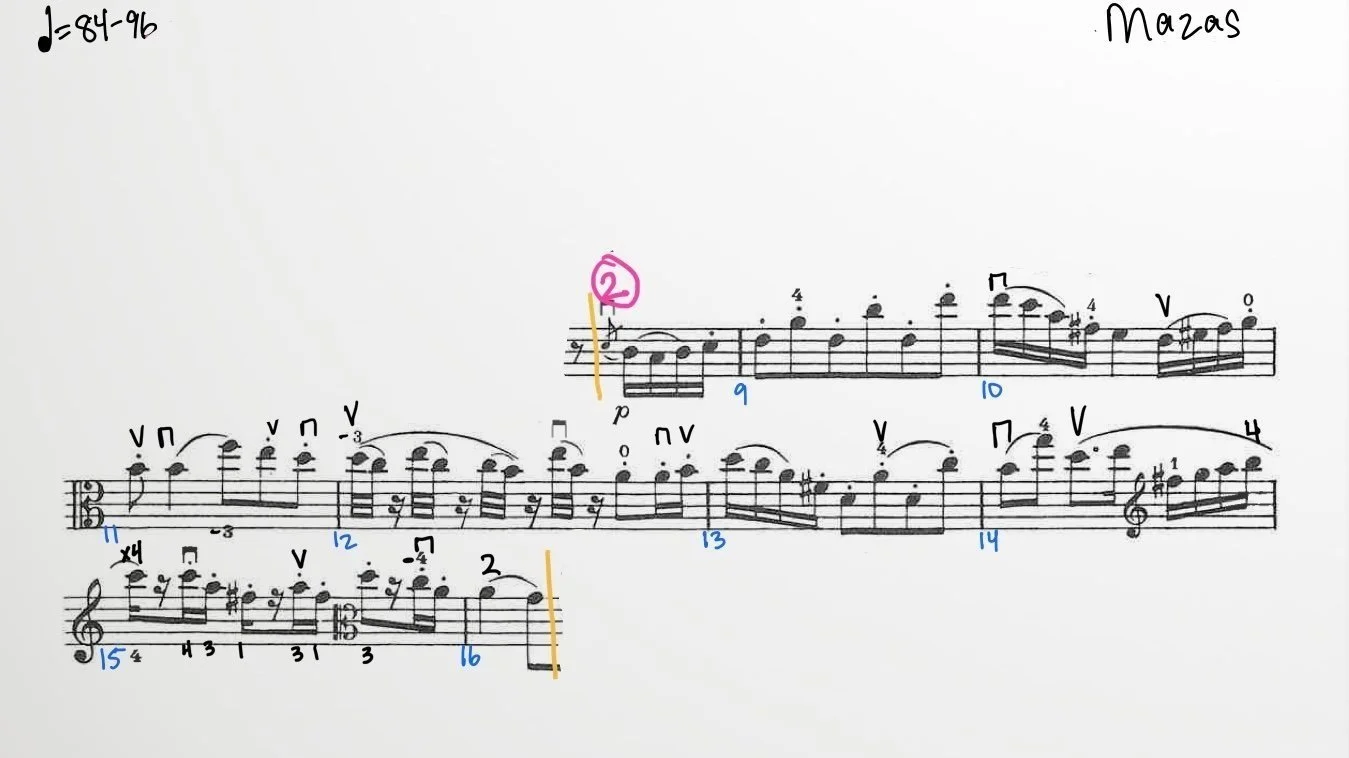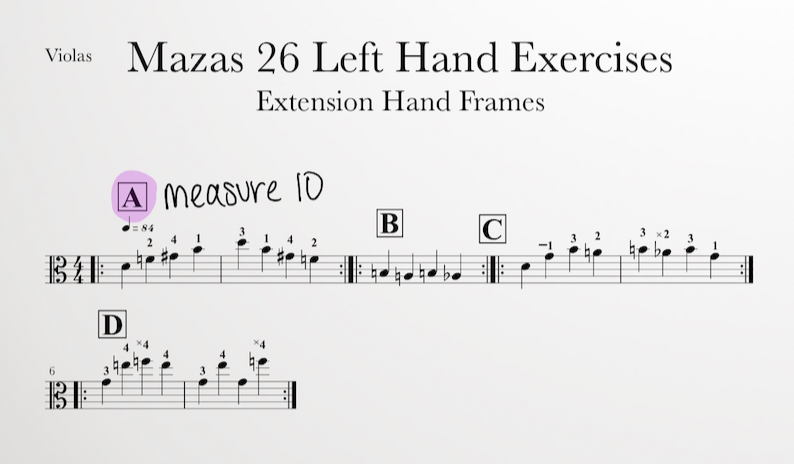IN THIS LESSON
PHRASE 2
MEASURES 9-16
Phrase 2 starts with an even sneakier, more mischievous character—a tiptoeing dance. The sound should be quiet, and the strokes can be quite short, giving a more compact energy. Exaggerated accents on accidentals also help the mischievous character stand out—consider using more vibrato to emphasize these. The slur with the shift in measures 11 and 14 can be audible, to give a sense of lift and lightness.
Measures 13-16 are warmer and sunnier, with a less tricksy character. The stroke here can be slightly longer to give warmth. Use full bows as you shift and travel to the high register of the viola.
General Practice Methods:
Shift slowly and audibly so you can arrive without needing to adjust.
Vibrate every note to get used to singing through separate bow strokes and playing melodically.
Remember—every note comes from the string.
Phase 1 of Practice:
Start with slow practice, with the bow on the string to establish coordination and intonation—and to hear where the phrase builds or leads to.
Plan your bow usage, building in enough bow for slurs like those in measures 11, 12, and 14.
Practice the phrase without grace notes initially to solidify your rhythm.
Phase 2 of Practice:
Once you are confident with the rhythm, add the grace note in measure 8—before the beat!
When you transition to playing notes with dots off the string, keep the bow nimble and approach this bow stroke change as a tool to add energy and character. Do not let dots add accents, break up the line, or negatively impact intonation.
Begin speeding up the whole phrase with a metronome. Perfect one measure at a time at this quicker tempo, and string them together until you can play the full phrase at one speed without stopping.
Breaking Down the Phrase & Reference Guide to Previous Exercises:
Measure 9:
Use a very compact and energetic off-the-string stroke. Each note is played from the string with fast bow speed, but use minimal bow for each note.
Vibrate each note!
Measure 10:
Watch that G# carries through to the 3rd beat, giving us a 3-4 frame on beat 3.
Beat 1 references Exercise A in Hand Frames and Extensions.
Measure 11:
This can be an audible shift from B to 3rd position with the 3rd finger to play F natural.
Use a full bow on this shift and stay in the upper half for the next two notes, leaving room for the following up-bow series.
Measure 12:
Shift on the downbeat back to the 3rd finger in 1st position. Use the On + Traveling bow stroke to work back to the balance point, so you are well set up for the following off-the-string strokes.
Measure 13:
Ensure the three 8th note up bows are off the string and stay at about the balance point.
Measure 14:
Beat 1 travels to the tip—this fast, open bow will help the shift to the 4th finger in 3rd position sing.
Start the up bow slowly so you can use more bow in beat 3 as you play higher and shift again.
The shifting and hand frame for beats 2 and 3 can be practiced with Shifting Exercises D (adding an F#) + E (practicing the extension of the 4th finger from B to C).
Shift from 3rd position to 5th position on the F#, then extend the 4th finger from B to C.
Measure 15:
The fingering coming down is 5th position with extended 4th finger: 4, 3, 1. For the note D, stay in 5th position and cross to the 3rd finger on the D string.
During the rest after the note D, shift to the 3rd position and play C with the 4th finger. Be sure to shift and place the whole hand frame so the next few notes can all be in time.
-
Add a short summary or a list of helpful resources here.


